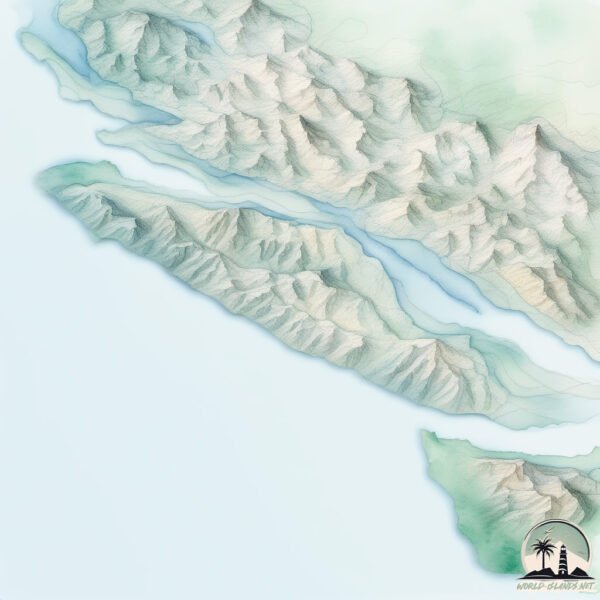Vancouver is a Giant Island spanning 31815 km² with a coastline of 4425 km.
Topography and nature of Vancouver
Timezone: UTC-08:00Timezone places: America/Los_AngelesMax. Elevation: 2195 m Golden HindeMean Elevation: 496 mVegetation: Evergreen Needleleaf ForestTree Coverage: 74%
The mean elevation is 496 m. Dominating the island’s landscape, the majestic “Golden Hinde” rises as the highest peak, soaring to impressive heights. The island is characterized by Mountains: High, steeply elevated landforms. Characterized by both a high maximum elevation (over 500 meters) and a high mean elevation, creating rugged, mountainous terrains on islands.
Dominating Vegetation: Evergreen Needleleaf Forest
Vegetation: 15 vegetation zones – Exceptionally Diverse Island
Infrastructure and Travelling to Vancouver
Does the island have a public airport? yes .
Does the island have a major port? yes .
The mean population of Vancouver is 25 per km². Vancouver is Gently Populated. The island belongs to Canada .
The name of the island resonates across different cultures and languages. Here is how it is known around the world: Arabic: جزيرة فانكوفر; German: Vancouver Island; Spanish: Isla de Vancouver; French: île de Vancouver; Portuguese: Ilha Vancouver; Russian: Ванкувер; Chinese: 溫哥華島
Continuing your journey, Gabriola is the next notable island, situated merely km away.
VANCOUVER ISLAND, BC, CANADA | 10 INCREDIBLE places to visit on Vancouver Island
Vancouver Island combines large forests, rugged landscapes, rocky mountain peaks, and mysterious coastlines. After living in this ...
VANCOUVER ISLAND, BC, CANADA | 10 INCREDIBLE places to visit on Vancouver Island
Vancouver Island combines large forests, rugged landscapes, rocky ...
Vancouver Island combines large forests, rugged landscapes, rocky mountain peaks, and mysterious coastlines. After living in this ...
Vancouver Island Vacation Travel Guide | Expedia
Vancouver Island – a place of awe-inspiring natural beauty. In this ...
Vancouver Island – a place of awe-inspiring natural beauty. In this video, discover why the fusion of history and rugged West ...
The Don'ts of Vancouver Island | Important Things You Need To Know
If you are planning an amazing trip to Vancouver Island, one of the ...
If you are planning an amazing trip to Vancouver Island, one of the most beautiful places in the world, then you need to watch this ...
Canada is classified as Developed region: G7: Group of Seven – Major advanced economies, including Canada, France, Germany, Italy, Japan, the United Kingdom, and the United States. The level of income is High income: OECD.
News – Latest Updates and Headlines from Vancouver
Stay informed with the most recent news and important headlines from Vancouver. Here’s a roundup of the latest developments.
Loading...
Social Media Posts about Vancouver
Loading...
Please note: The data used here has been primarily extracted from satellite readings. Deviations from exact values may occur, particularly regarding the height of elevations and population density. Land area and coastline measurements refer to average values at mean high tide.

